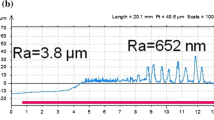Abstract
The aim of this paper is to show how to predict the accurate machining technology for the particular free form NURBS or B-spline surface. Since that kind of a surface is very hard to describe in an analytical manner, the topological and geometrical information about the surface was acquired with the help of self-organized neural networks (NNs) and first- or second-order statistic parameters. It is proved that the most significant parameter in this process is the curvature, especially when rapid changes of curvature on a free form surface occurred. As the Gaussian distribution of surface curvatures and slope gradient data were presumed, the mean and variance was used for one-dimensional data presentation, and the Hebbian output data vector was used to assess probability, density function and distribution of the presented data. For collecting the maximum amount of surface information, the principal component analysis method inside the Hebbian NN was used.












Similar content being viewed by others
References
Austin SP, Jerard RB, Drysdale RL (1997) Comparison of discretization algorithms for NURBS surfaces with application to numerically controlled machining. Comput Aided Des 29(1):77–83
Böhm J, Brenner C (2004) Curvature based range image classification for machining object recognition. Institute for Photogrammetry, University of Stuttgart, Germany
Cover T, Thomas J (1991) Elements of information theory. Wiley, New York
Diamantaras K, Kung S (1996) Principal component analysis networks. Theory and applications. Wiley, New York
Elber G (1994) Free form surface region optimization for three and five axis milling, Technical report CIS9403. Technion, Israel Institute of Technology, Haifa 32000, Israel
Fisher J, Lowther J, Shene CK (2004) If You Know BSplines Well, You Also Know NURBS!. Department of Computer Science Michigan Technological University, SIGCSE’04
Flynn P, Jain A (1989) On reliable curvature estimation. In: IEEE Conference on Pattern Recognition, pp 110–116
Gordon GG (1990) Face recognition based on depth maps and surface curvature. Harvard Robotics Laboratory Technical report MA 02138, Harvard University
Higashi M, Tsutamori H, Hosaka M (1996) Generation of smooth surfaces by controlling curvature variation, vol 15. Eurographics Associations, Toyota Technological Institute, 2-12-1, Hisakata, Nagoya468, Japan
Ip CY, Lapadat D, Sieger L, Regli WC Using shape distribution to compare solid models; URL: http://www.mcs.drexel.edu/∼regli. Department of Mathematics and Computer Science, Drexel University
Ko KH (2003) Algorithms for Three-Dimensional Free-Form Object Matching. Master thesis, Massachusetts Institute of Technology, MA
Korosec M (2003) Optimization of free form surface machining, using neural networks. Dissertation, University of Maribor, Faculty of technical engineering
Korosec M, Balic J, Kopac J (2005) Neural network based manufacturability evaluation of free form machining. Int J Mach Tools Manuf 45(1):13–20. http://dx.doi. org/10.1016/j.ijmachtools.2004.06.022 [COBISS.SI-ID 8975894]
Lilienblum T, Albrecht P, Michaelis B (1996) Improvement of 3D data by neural networks in free form machining.In: Proceeding International Workshop on Neural Networks for Identification, pp203–211
Litvin A, Karl WC (2004) Using shape distributions as priors in a curve evolution framework. In: Proceeding of IS&T/SPIE 16th Annual Symposium Electronic Imaging Science and Technology, San Jose, CA
Martin R (1998) Estimation of principal curvatures from range data. Int J Shape Model 3(4):99–109
Onwubolu GC (1999) Manufacturing features recognition using backpropagation neural networks. J Intell Manuf 10:289–299
Osada R, Funkhouser T, Chazelle B, Dobkin D (2001) Matching 3D models with shape distributions in free form machining. In: International conference on shape modeling and applications. IEEE Computer Society Press, Genova, Italy, pp154–166
Principe JC, Euliano NR, Lefebvre WC (2000) Neural and adaptive systems, Fundamentals through simulations. Wiley, New York
Stokely EM, Wu SY (1992) Surface parameterization and curvature measurement of arbitrary 3D objects: five practical methods. IEEE Trans Pattern Anal Mach Intell 14(8):833–840
Yinghua W (2004) New approaches for computing tolerance zones of 3D CAD models. Master thesis, Institute for Engineering Design Technische Universität Carolo Wilhelmina Braunschweig, Germany
Author information
Authors and Affiliations
Corresponding author
Rights and permissions
About this article
Cite this article
Korosec, M. Technological information extraction of free form surfaces using neural networks. Neural Comput & Applic 16, 453–463 (2007). https://doi.org/10.1007/s00521-006-0071-9
Received:
Accepted:
Published:
Issue Date:
DOI: https://doi.org/10.1007/s00521-006-0071-9




